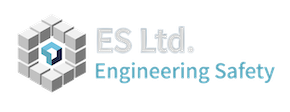Escape, Evacuation and Rescue Analysis (EERA)
In the event of a major incident, the design of a facility must be such that any ensuing risk to personnel can be assessed to a level considered to be As Low As Reasonably Practicable (ALARP). This can often be achieved through the provision of suitable means of Escape, Evacuation and Rescue (EER) in conjunction with the implementation of suitable emergency response procedures and training.
Method of EERA
There are a number of steps involved in undertaking an EERA study; beginning with the preparation and identification of project assumptions and goals, right through to the calculation of the endurance time and subsequent ‘ALARP’ evaluation of the EER conclusions. The following methodology highlights the key phases to conducting a successful EERA study.

FAQ
As a minimum, the following information would be required to conduct the study:
– Existing PHA / HAZOP report
– P&ID’s
– Facility Emergency Response Procedures
– Facility Loss Prevention Philosophy
– Consequence Analysis report and models
Based on the project requirements, extra information may be required. This will be highlighted within the Terms of Reference (ToR).
Upon acceptance of the ToR, ES will prepare an EERA report describing the facility, the scope of work, a detailed methodology, the identified hazardous scenarios, muster points, refuge areas, means, routes and timing of EER, emergency equipment, the results of the analysis, and any recommendations based on deficiencies identified with the EERA.
ES are a globally renowned providers of engineering and safety services. ES have conducted EERA’s for several offshore platforms. ES also have the capability to conduct them for onshore facilities, accommodation facilities and construction vessels amongst others. For more information, or to discuss your needs for conducting a PHA study, please contact us using the form below or email [email protected]


